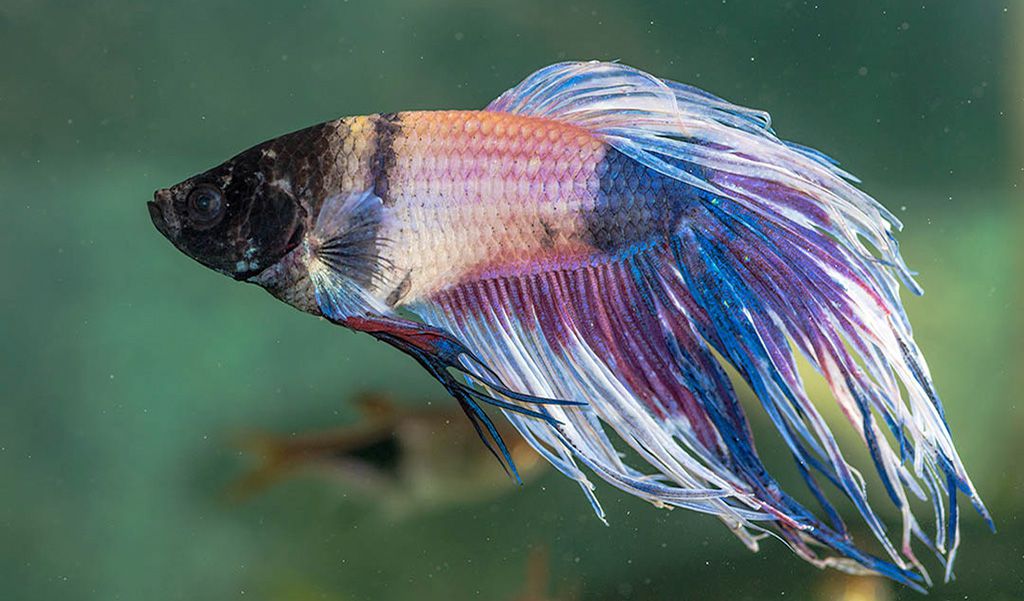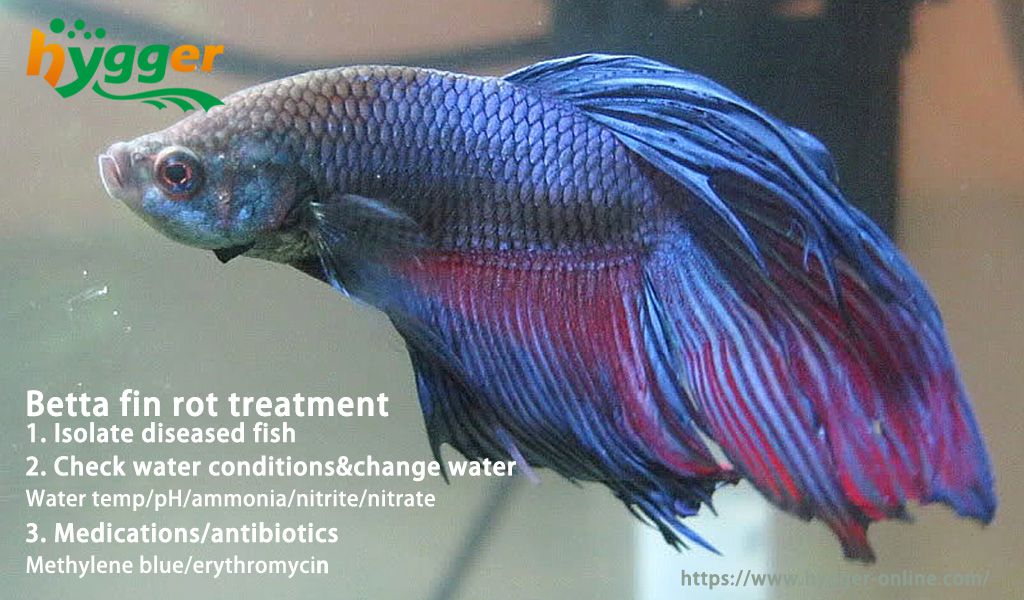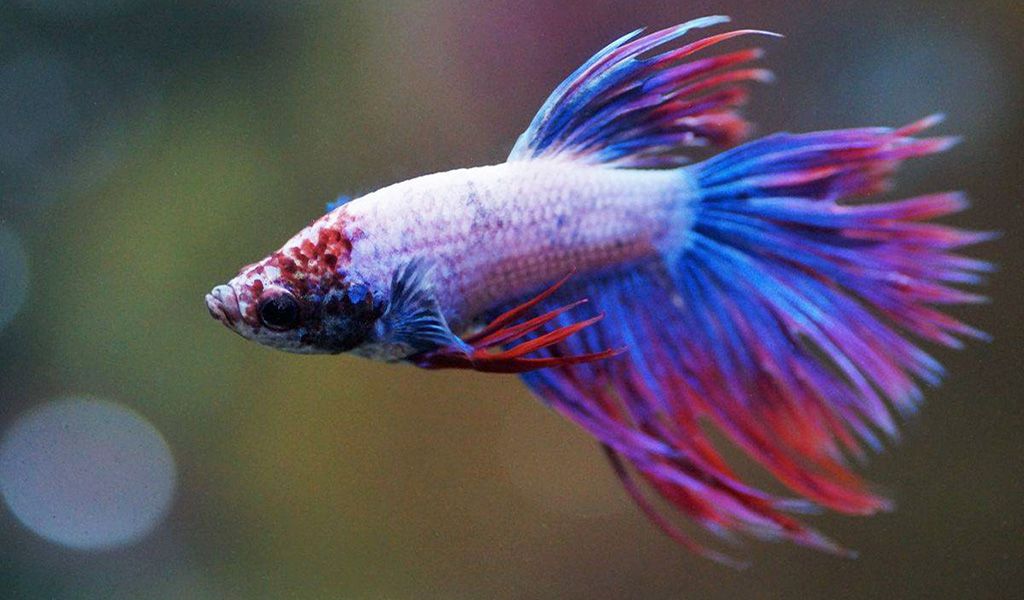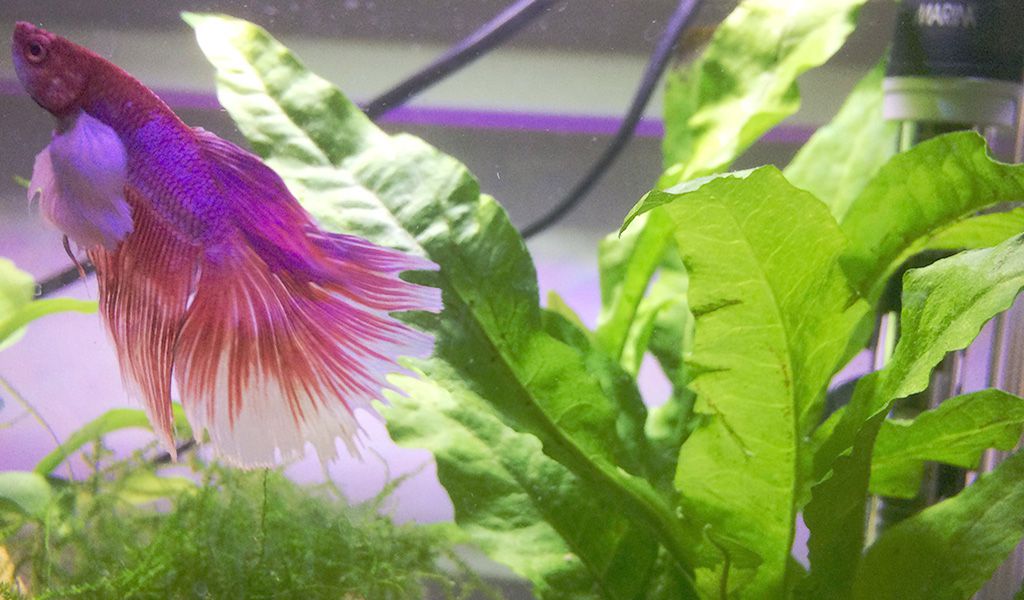Dear friends, have you ever noticed fin rot before? Do you know how to differentiate it? Fin rot is one kind of disease, which are harmful to your fish tank. Next, we will get into a further discussion about fin rot in this article.
Content Table
Fish Fin Rot
To begin with, what is fish fin rot? It is a fish disease, commonly found in aquariums. All freshwater fish may be infected by fin rot disease, especially fish with long or flowing fins, like betta fish, fancy goldfish, and molly fish. Besides that, fin rot may be the result of bacterial infections or fungal infections. The former will lead to ragged fin rot, while the latter will cause even fin rot and white edges appearance. Generally, fin rot begins from the fins’ edges, then gradually reaches the fin base, and attacks the fish body finally. Usually, fungal infection happens after bacterial infection. If you do not deal with it quickly, other health problems may appear.

What Causes Fin Rot in Betta
Causes of fin rot in Betta
1. Poor water conditions
On the one hand, poor water quality is one reason for fin rot. Fish feces, waste, uneaten food, and others will increase ammonia, nitrite, and nitrate levels. Then the pH level gets improved correspondingly, which is good for bacteria to thrive. Finally, harmful bacteria may appear in your fish tank, gram-negative bacteria for instance. It can promote disease spreading. Specifically, fin rot is commonly caused by Vibrio, Aeromonas, and Pseudomonas. On the other hand, the unideal water temperature would lead to fish fin rot. If the water temperature is too low, your fish will also get fin rot disease.
2. Improper betta tank setup
You may set up your fish tank inappropriately, overstocking, and adding unfeasible tank mates for example. It will cause stress and injury, which may cause fin rot. Moreover, overstock would lead to poor water quality, while poor water quality also causes stress and fin rot. Exactly, the poorer the water quality, the more stress the fish get. In addition to this, some tank mates would nip fins. It would cause injury to fish. Then fish fins may get bacterial infection easily.
Aside from poor water conditions and improper tank setup, second infections are another cause. Provided that there is one diseased betta fish in your aquarium, you do not treat it as soon as possible. Then other bettas or tank mates in your aquarium may get infected because of physical contact with the diseased fish and infected aquarium water. On the other hand, if serious, the rotted fins may suffer a second infection on frayed edges.
Symptoms of fin rot in Betta
There are some symptoms to differentiate whether your bettas suffer from fin rot disease or not. However, the symptoms may vary with the infection duration. In the earlier period, fins begin discoloring, mainly on the edges. Fins’ edges are turning white, black, brown, or red. And the fins may become translucent. Then, infected fin parts fall off, and frayed fins appear. During the advanced period, fins rot entirely and even fall off completely, and the tails shorten.
While the fin base is inflamed. Also, fin rot disease starts to attack the fish body, which may be fatal for fish. In addition to this, infected fish prefer to stay at the bottom of your aquarium. They refuse to eat, lose their appetite, and become lethargic.
Is fin rot contagious?
Fin rot is contagious. As we have mentioned above, fin rot may be the result of bacterial or fungal infection. The bacteria are gram-negative bacteria, which are easy to spread. Other fish in your aquarium may be infected easily because of physical contact. Furthermore, the water would catch the bacteria, while the aquarium filter would also cycle the infected water. Finally, the whole water in your fish tank would be infected. Consequently, fish in your tank will get diseased.
Betta Fin Rot Treatment
Fin rot disease affects fish gradually. Hence, it is better to treat it as soon as possible. And fortunately, it is relatively not hard to heal the fin rot disease. In this segment, let’s learn some effective methods.
1. Isolate the diseased fish
As fin rot disease is contagious, you should remove the diseased fish and isolate it in a quarantine fish tank. It reduces the possibility of bacteria spreading to other bettas.
2. Check the water conditions
Check the water conditions with the aquarium water test kit. It helps you analyze the cause of fin rot. After that, you should change the water completely and rinse the aquarium accessories and equipment. Next, it is crucial to check the water conditions and make an adjustment, including water temperature, pH level, as well as ammonia, nitrite, and nitrate levels.

The betta fish requirements:
- Water temperature: 75-80℉
- pH level: 6.5-8.0
- Ammonia level: 0 ppm
- Nitrite level: 0 ppm
- Nitrate level: less than 20 ppm
3. Medications or antibiotics
You can use Phenoxyethanol, malachite green, methylene blue, or other feasible proprietary agents. Aside from medications, aquarium salt can also make sense. But it takes longer to heal your diseased fish. More importantly, you should make sure what you add are for freshwater fish, rather than saltwater fish. Specifically, if there are sharp edges of the rotted fins, you can use antibiotics, like erythromycin. As for the fins rotting evenly and holes appearing on the fins, it is recommended to use antifungal medicine, methylene blue for instance.
Also, there is one more tip. After adding medications, you should observe your fish from time to time. Because the medications may bring side effects. If you find any side effects from fish, you should stop treatment to avoid injuries. Moreover, fish may hard to breathe after adding medications, hence, you can add a sponge filter or air pump to make sure sufficient oxygen level.

How Long Does Fin Rot Take to Heal?
Usually, it takes 4–5 days or several weeks to heal the fin rot disease. There are some signals of recovery, including fins regrowth, restarting eating, and no other infected symptoms. However, you should avoid a second infection during the treatment. Nonetheless, compared with curing the fin rot disease, it is best to prevent your fish from fin rot. It is recommended to keep great water quality, maintain stable water temperature, and provide balanced diets.
You should change the water with a professional aquarium water changer and clean your fish tank regularly. It is feasible to change 20-30 percent of the water once a week. Also, do not overstock and overfeed. It prevents excess waste and makes sure sufficient room to swim. Besides, do not introduce fish that nip fins. Otherwise, they will cause injury. Fish like rasboras, neon tetra, and ember tetra can be excellent betta tank mates for the aquarium.



Leave a comment